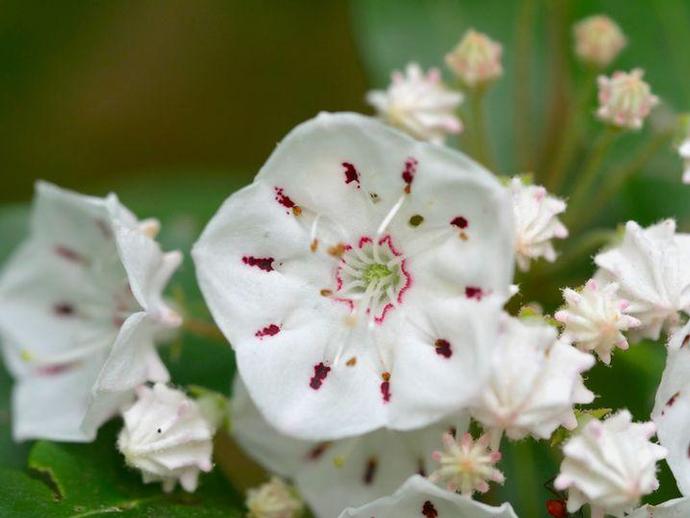May 25, 2021
Ben here with the Tuesday edition of #BenInNature presented by our friends at Carter Bank & Trust!
When we think of plants native to Appalachia, it's hard to imagine many more iconic than mountain laurel (Kalmia latifolia). Also called "spoonwood" because some indigenous Americans used to make spoons from it, mountain laurel can be found in the eastern U.S. from southern Maine all the way down to northern Florida.
Mountain laurel is generally found in mountainous forested areas within its range, preferring acidic soil with a pH between 4.5 and 5.5. It has a tendency to grow in dense thickets, especially in low, wet areas. In the southern Appalachians, these thickets become so crowded that they're sometimes referred to as "laurel hells" because they're all but impassable!
Despite the fact that there's a well-established (and delicious!) wine made in southwest Virginia that's named after the mountain laurel, you don't want to eat or drink anything made from this plant! Every part of the mountain laurel is poisonous to humans, not to mention deer, horses, goats, cattle, and monkeys (although I'm not sure how anyone figured out that last one since monkeys aren't generally found in the mountainous forests of the eastern U.S.). In fact, even honey made from mountain laurels can cause some terrible symptoms if you eat more than a spoonful!
The flowers of the mountain laurel have an unusual method of pollen dispersal. It's a bit hard to see, but you might notice in the macro shot of the mountain laurel flower that the stamens (the little filaments that produce pollen) are bent at odd angles. These stamens are actually under high tension, and when an insect lands on the flower, the tension is released and the stamens fling pollen all over the insect. If you have a pollen allergy, be careful when you lean in to sniff a mountain laurel!
ABOUT #BenInNature
Social distancing can be difficult, but it presents a great opportunity to become reacquainted with nature. In this series of posts, Administrator of Science Ben Williams ventures outdoors to record a snapshot of the unique sights that can be found in the natural world. New updates are posted Monday - Friday, with previous posts highlighted on the weekends. This series of posts is made possible thanks to the support of VMNH Corporate Partner Carter Bank & Trust (www.cbtcares.com).
NATURE PHOTO IDENTIFICATIONS
If you discover something in nature that you would like help identifying, be sure to message us right here on Facebook with a picture (please include location and date of picture) and we'll have our experts help you identify it!

 Hours & Admissions
Hours & Admissions Directions
Directions

